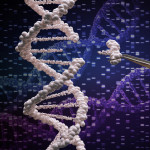Two new studies of gene therapies that operate like the fusion inhibitor class of antiretrovirals further the hopes that scientists may develop ways to control HIV without drugs. Fusion inhibitors work by preventing the connection of HIV’s outer membrane with immune cell membranes.
In one study, researchers at the University of Pennsylvania and Sangamo BioSciences attached fusion inhibitor-like proteins to HIV coreceptors on CD4 cells, a process that blocked HIV infection in a test tube. They found that the coreceptors could still otherwise function normally, and theorized that such a treatment would probably not be toxic.
A study conducted by the Fred Hutchinson Cancer Research Institute in Seattle took blood-producing stem cells from the bone marrow of four pigtail macaque monkeys and modified them. In two of the monkeys, the researchers spliced in genetic instructions to express a protein to act like a fusion inhibitor. A year after the monkeys received the modified stem cells, they were infected with a highly aggressive form of simian HIV. One monkey, who had over half of its stem cells replaced, balanced out with a viral load of a few hundred, compared with 10,000 to 40,000 in the monkey who received just a 20 percent stem cell replacement. The control monkeys’ viral loads were a respective 300-fold and more than 1,400-fold higher by comparison.
The key to a successful genetic therapy is first finding combined methods that chip away at the viral reservoir where HIV hides from therapy, says Fred Hutchinson’s Patrick M. Younan, PhD. “And if we do that,” he says, “we could potentially use this [genetic fusion inhibitor] method to allow the immune system basically to control the virus replication once we decrease the pool.”
The Genetic Fusion Inhibitor






Comments
Comments